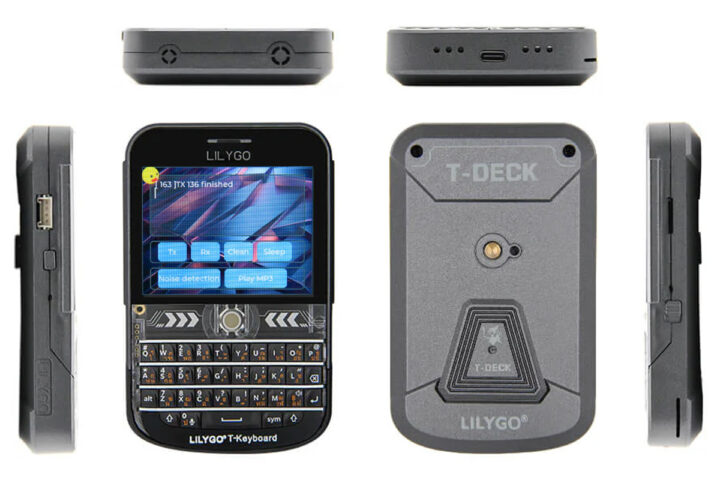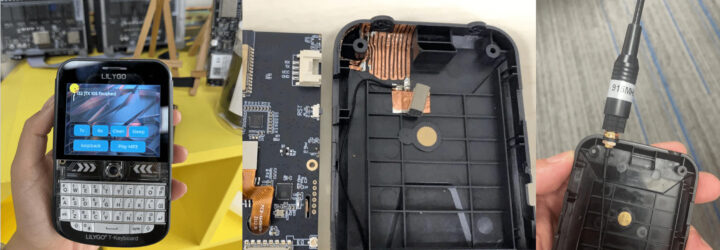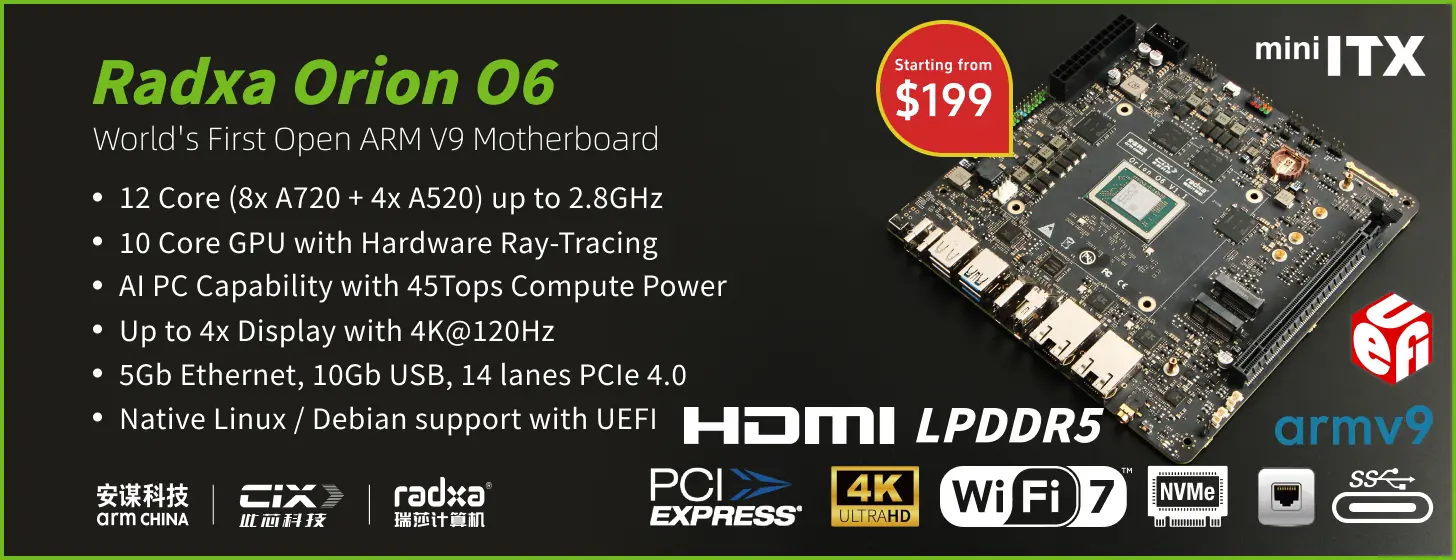The LILYGO T-Deck Plus is an ESP32-S3 based handheld development kit that resembles a Blackberry phone with a QWERTY keyboard and trackball. The device features a 2.8-inch IPS LCD, a GPS module, a LoRa transceiver, and a 2,000mAh battery which means you can take it outside and do some pen-testing and research. Additionally, the board features a microphone, a speaker, and a microSD card slot for storage.
Just last year, LILYGO introduced the LILYGO T-Deck ESP32-S3 development board with LoRa and a 2.8-inch display, and the T-Deck Plus builds on the earlier design but also adds a GPS module and a higher capacity battery.
LILYGO T-Deck Plus specifications
- ESP32-S3-WROOM-1 wireless module
- SoC – ESP32-S3FN16R8 dual-core Tensilica LX7 microcontroller @ up to 240 MHz with
- 2.4 GHz 802.11n WiFi 4 and Bluetooth 5.0 LE connectivity
- Memory – 8MB PSRAM
- Storage – 16MB SPI flash
- PCB antenna
- SoC – ESP32-S3FN16R8 dual-core Tensilica LX7 microcontroller @ up to 240 MHz with
- Storage – MicroSD card slot
- Display – 2.8-inch IPS display with 320×240 resolution; ST7789 SPI display controller
- Audio
- A built-in speaker using MAX98357A amplifier
- 2x MSM381A3729H9CP MEMS microphones
- Both the speaker amp and microphones are controlled by the ES7210 Audio DAC.
- Wireless
- 2.4 GHz 802.11n WiFi 4 and Bluetooth 5.0 LE connectivity (ESP32-S3)
- SX1262 LoRa module @ 868/915 MHz; up to +22 dBm Tx power (built-in internal antenna and option for external antenna support)
- Optional GPS module which gets connected to the Grove UART connector
- USB – 1x USB Type-C port for power and programming
- User input
- LILYGO T-Keyboard with QWERTY design, ESP32-C3 microcontroller
- Trackball also acts as the BOOT button
- Reset button
- Expansion
- 4-pin Grove connector (UART)
- 6-pin header (unpopulated) connected to ESP32-C3 (T-Keyboard) with UART, BOOT/IO09, Reset, VCC, and GND
- Misc
- 4x AN48841B Hall Effect sensor
- On/off switch
- Power Supply
- 5V via USB Type-C port
- 2,000 mAh battery; IO04 ADC pin for battery voltage; TP4065B battery charger chip (based on schematics)
- Dimensions – 115 x 72 x 20 mm
After looking at the specification, and the documentation it’s clear that they have changed nothing and put the T-Deck inside a case and called it a Plus. Is everybody going the Apple way?
The case now has a 1/4-inch mounting hole on the back of the device, with that you can now mount the device on a tripod or attach something else to the device.
Previously we have written about various unique projects with ESP32-S3 including the ESP32-S3 PD Stepper, the WiCAN Pro, the MoreSense MS-06 air quality monitor, the MechDog AI Robot Dog the ReSpeaker Lite Voice Assistant Kit and many more feel free to check those out if you are looking for unique projects.
While most of the LILYGO devkits are designed for experienced users, where you need to write your own code to work with the hardware. The T-Deck and T-Deck Plus benefit from some useful community-developed projects like Meshtastic or Scott Powell’s Ripple QWERTY firmware. Meshtastic is a ready-made solution for secure, long-range communication, for off-grid mesh networking, whereas the Ripple QWERTY firmware provides an alternative user interface for the device. Very recently, Ripple QWERTY also added support for Google Maps, group chats, shared calendars, and more.
Like the old T-Deck, the new Plus model can be programmed using Arduino IDE or PlatformIO. Additional documentation is available on the LILYGO GitHub repository. Note – I copied the new Git link from the products page of the T-Deck Plus, but this link redirects me to the same page as the T-Deck.
The LILYGO T-Deck Plus is priced at around $81.48 and can be purchased from the AliExpress store, and it should soon become available on Amazon where the original T-Deck is sold for $52 and up.
Debashis Das is a technical content writer and embedded engineer with over five years of experience in the industry. With expertise in Embedded C, PCB Design, and SEO optimization, he effectively blends difficult technical topics with clear communication
Support CNX Software! Donate via cryptocurrencies, become a Patron on Patreon, or purchase goods on Amazon or Aliexpress








